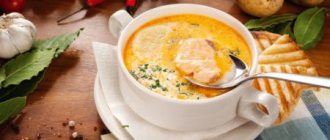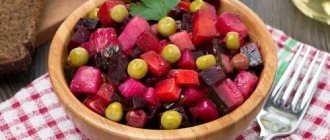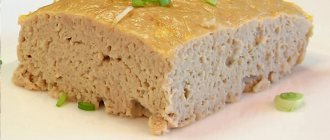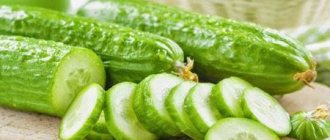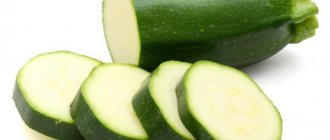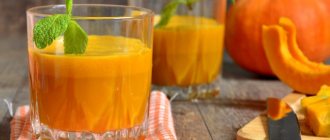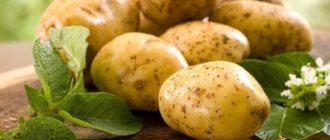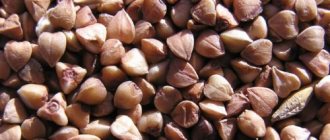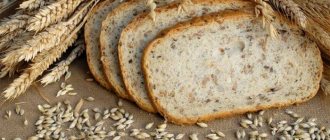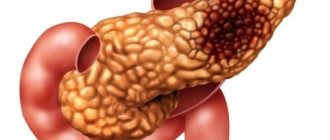Even in ancient Rome, poets mentioned carrots in their works as the “queen of vegetables.” This epithet is quite fair in relation to this plant. Carrots contain a huge amount of biochemically active substances that help maintain the normal course of the most important physiological processes. Knowing this, many summer residents annually harvest an impressive harvest of reddish-orange root vegetables on their plots of land. Carrots are always remembered when organizing dietary nutrition for many diseases, including pancreatitis.
Chemical composition of carrots
Carrots have a low calorie content - 41 kcal raw and 35 kcal after heat treatment, contain virtually no fat (0.1 g), but are rich in healthy carbohydrates (6.9 g) and proteins (1.3 g).
The composition contains all the substances necessary for the human body:
- amino acids;
- alimentary fiber;
- organic acids;
- starch;
- macroelements - potassium, calcium, sodium, magnesium, silicon, sulfur, chlorine, phosphorus;
- trace elements - iron, cobalt, iodine, manganese, molybdenum, copper, selenium, fluorine, zinc, chromium.
Carrots are superior to other vegetables in terms of vitamin A content: 100 g - 240% of the daily value. It is also a valuable source of ascorbic and nicotinic acids, vitamins E, H, K. Orange fruits are valued for their content of B vitamins: thiamine, riboflavin, niacin, choline, pyridoxine, pantothenic acid, folate.
Nutritionists, if possible, advise including carrots in the diet of healthy people every day. It contains high concentrations of beta-carotene. This element performs a number of important functions:
- slows down the aging process;
- protects against influenza and upper respiratory tract infections;
- maintains the health and condition of the skin and mucous membranes;
- has a positive effect on redox processes;
- takes part in the metabolism of proteins, fats, carbohydrates;
- increases resistance to intestinal diseases;
- strengthens the immune system;
- supports normal metabolism;
- ensures proper functioning of the sebaceous and sweat glands;
- maintains healthy teeth and bones;
- Maintains eye hydration and protects against drying out.
Carrots prevent the development of cardiovascular diseases. B vitamins and ascorbic acid increase the density and elasticity of vascular walls and small capillaries, reduce the level of bad cholesterol, and regulate blood glucose levels.
Potassium and magnesium ensure proper functioning of the heart muscle, improve the conduction of nerve impulses, copper is involved in hematopoiesis, and selenium stimulates the formation of red blood cells. As a result, the risk of formation of atherosclerotic plaques is reduced, normal blood flow is maintained, and the development of ischemia, stroke, hypertension, and diabetes is prevented.
Beneficial properties of carrots for the pancreas
It is difficult to overestimate the importance of carrots for the digestive system. Regular consumption of vegetables restores and supports the functioning of the pancreas. A sufficient amount of fiber promotes the active removal of various types of waste and toxins from the body, eliminates excess sugar, bad cholesterol and other harmful substances.
The role of carrots in restoring and maintaining water-electrolyte balance, improving digestion, and normalizing metabolism has been proven. The vegetable has an anti-inflammatory effect, protects mucous membranes from the influence of irritating factors, reduces the intensity of pain and other symptoms.
How do carrots affect the pancreas?
The beneficial properties of carrots for the pancreas are determined by the period of the disease. People at high risk of developing pancreatitis are recommended to consume the vegetable as a preventive measure.
During an exacerbation of pancreatitis
During the period of acute pancreatitis, with pronounced clinical signs, a strict diet is indicated. For the first 2-3 days, doctors recommend completely abstaining from food, drinking only still water, rosehip infusion, and herbal tea without sugar. This relieves the affected organ.
As soon as possible, the patient is transferred to a nutritious diet. Starting from 3-4 days, carrots, like other foods, are allowed to be eaten. They provide a gentle regime; the menu includes dishes with a semi-viscous, liquid and semi-liquid consistency. Carrots are boiled or baked, steam pudding, puree, soufflé, and cutlets are prepared.
During remission
During the period of remission, the patient is transferred to a complete balanced diet . The diet includes carrots and carrot juice. They are combined with grains, vegetables and fruits, pre-heat-treated, and consumed without oil or salt. Fried carrots, which have a high calorie content, are excluded from the menu.
Can I drink carrot juice? Yes, but it is better to mix it with other vegetable drinks. Start taking small doses - 100 ml, gradually increasing the portion to 400-500 ml per day or 200 ml at a time.
Reference . Excess carrots in the diet will cause bloating, increased gas, cramping, constipation and diarrhea.
Carrots for chronic pancreatitis
Chronic pancreatitis allows the consumption of thermally processed vegetables. Raw carrots are heavy on the stomach and take a long time to digest; boiled or stewed carrots are easier to digest. It has lower calorie content, but the content of phenols and antioxidants increases, which resist many diseases and ensure proper functioning of the digestive system.
What salads can you eat with pancreatitis?
Salads have long become an integral part of the menu in most families. They serve as a separate appetizer or as an addition to a side dish, meat and fish dishes. Many options are prepared from simple and affordable products and are present in the daily diet, while others serve as holiday snacks. A patient with pancreatitis does not need to completely abandon such dishes during a diet, but the patient must know how to prepare the salad and the list of ingredients for safe consumption.
Let's discuss permitted and unacceptable foods in salads.
Allowed Ingredients
The diet for patients with pancreatitis allows the consumption of products used for preparing salads:
- lean meat (rabbit, turkey, chicken, beef);
- lean fish;
- rice cereal;
- boiled, steamed or baked fruits and vegetables;
- cottage cheese, low-fat sour cream;
- vegetable oils.
The listed products can be eaten separately and as part of salads.
Prohibited Products
A list of foods that need to be excluded from the diet has been compiled. It is forbidden to add to salads:
- fatty meat (pork, lamb);
- fatty fish;
- dairy products with a high proportion of fat;
- cheese;
- nuts;
- beans, peas, other legumes;
- egg yolks;
- mayonnaise;
- chips and crackers with hot seasonings and chemical additives.
Knowing this list, the patient has the opportunity to independently come up with a combination of products when preparing salads, and modify traditional recipes.
Spinach and green salad
Individual products are on the border of the lists of permitted and unacceptable products. The reason is the composition of beneficial substances and those that are considered dangerous for the inflamed pancreas. For example, spinach leaves and green salad.
- Spinach includes a large list of vitamins and beneficial microelements. The plant contains a significant amount of oxalic acid, which has an irritating effect on the diseased pancreas. For pancreatitis, nutritionists recommend eating exclusively fresh, soft, young leaves of the vegetable.
- Fresh green salad leaves are beneficial for a healthy person and for those suffering from pancreatitis. Due to the high content of ascorbic acid, it is not recommended to include the vegetable in the menu more than twice a week.
Possible harm and contraindications
Carrots are contraindicated for kidney and liver diseases, large stones in the urinary system, gastrointestinal pathologies in the acute stage, allergies.
A raw food diet creates an unusual load on the organs of the gastrointestinal tract, especially if there are chronic diseases. In people with allergies, the vegetable causes a skin rash, peeling, and itching.
Excess beta-carotene provokes exacerbation of symptoms of pancreatitis and cholelithiasis, vomiting and nausea, drowsiness, lethargy, and headache.
Eating raw or boiled vegetables for inflammation of the pancreas
The healing effect on the body produced by carrots is undeniable:
- increasing immune defense;
- sharpening of vision;
- relief from constipation;
- removal of toxins;
- preventing cell death;
- regulation of fat metabolism.
Carrots are perfectly balanced in the dietary aspect - per 100 g of product there is:
- only 35 calories;
- 0.1 mg fat;
- 7 g carbohydrates;
- 1.2 g protein.
Is it possible or not to eat vegetables during the acute stage of the disease?
Carrots are very useful (have medicinal properties) in the treatment of gastrointestinal pathologies. A natural antioxidant helps regulate the metabolic process and stimulates the excretion of pancreatic enzymes.
But people with gastritis, cholecystitis, pancreatitis and liver diseases should be wary of consuming raw vegetables. Especially during periods of exacerbation, when a strict diet and strict nutritional regimen are required.
The fiber in fresh vegetables irritates the mucous membrane. Therefore, only boiled carrots are allowed for pancreatitis, in its acute manifestation. It is added to the diet on the 7th day after fasting and restricted diet No. 5. First try 1-2 tablespoons of steamed or in a slow cooker and thoroughly grated carrots. Gradually bring to a portion of 150–200 grams.
Root vegetables are chosen very carefully. They should be a bright, uniform orange color, without green “rims” at the base, and without signs of deterioration.
Fresh carrots, like other vegetables or fruits, are avoided. In acute pancreatitis, there is a high risk of provoking increased fermentation of pancreatic juice, as well as causing the onset of diabetes mellitus.
General recommendations
Proper preparation of a variety of salads for pancreatitis will diversify the patient’s diet, speed up the healing process and replenish the body with nutrients.
You cannot limit your diet only to salads; it is important to remember that dietary food must remain varied and complete. Like other dishes, salads should not be eaten hot or too cold; portions should be small and meals should be frequent.
Let us remember that pancreatitis is a serious disease that requires correct treatment, including proper nutrition. Such a diagnosis cannot be made independently, since the symptoms are similar to other pathologies of the digestive tract. This indicates that when signs of the disease appear, you need to contact a gastroenterologist, who, with the help of medical manipulations, will establish an accurate diagnosis and prescribe the necessary therapy. You should not prescribe a diet for yourself and arbitrarily decide whether certain foods are allowed to be consumed - such issues are within the competence of the doctor.
In chronic form
A universal dish for problem pancreas is boiled carrot puree. This is one of the most effective folk remedies to restore the normal functioning of the gastrointestinal tract.
Our grandmothers used the recipe for carrot puree for pancreatitis. In case of chronic pancreatic pathology, the homogeneous vegetable consistency does not burden the secretory function with work and does not irritate the mucous membranes.
You can eat puree every day, no more than 200 grams per day. For variety, sesame, turmeric and other spices allowed for pancreatitis are added to it.
For better absorption of carotene, it is good to season the vegetable with oil:
- refined sunflower;
- olive;
- linen.
In the remission stage, with low stomach acidity, the puree is whipped with a small amount of skim milk.
With a positive recovery trend, raw carrots and fresh juice are slowly introduced into the menu.
Its effect on the pancreas
The biochemical composition of carrots makes it a unique trigger for improving gastric motility and regulating the acid-base balance. Proper use of freshly squeezed carrot juice in the complex treatment of chronic pancreatitis speeds up recovery.
However, we must remember that fresh vegetables too actively stimulate the fermentation and secretory work of the pancreas during periods of exacerbation of inflammation. Therefore, in case of acute pancreatitis, carrots are consumed exclusively in boiled, pureed form. And it is introduced into the menu only after the vivid symptoms of pancreatic disease have subsided.
Baked vegetables and fruits have a calming effect on the pancreas. For example, baked apple and carrot slices (without peel), grind in a blender, add a little honey and use this homemade mix in the diet menu to restore the stomach and pancreas.
What dishes can be prepared from vegetables?
Carrots provide a wide variety of dishes. These include various salads, vegetable stews, regular purees and even cutlets. All recipes are easy to prepare and useful for pancreatitis or gastritis.
Carrot cutlets
Carrot cutlets add variety to the menu for pancreatitis. They are prepared using additional ingredients.
- Boil one large carrot for 20 minutes, separate the peel and grate.
- Add 2.5 tbsp. l. semolina, 1 tbsp. l. linseed or olive oil, a pinch of salt and mix the ingredients thoroughly.
- Use a tablespoon to form cutlets and place them on the bottom of a multicooker or enamel pan (if you do not cook in a multicooker, then the cutlets are stewed for 15-20 minutes in a steam bath, with a small amount at the bottom of the pan).
- Warm cutlets are sprinkled with sesame seeds. You cannot saute with breadcrumbs - sharp crumbs can inadvertently injure the sensitive gastric mucosa. You can add crushed crackers to the “minced meat” before steaming the cutlets.
Instead of semolina, you can use rice, buckwheat or oat flour. It is better to grind the grains yourself, in a coffee maker.
How to make carrot puree?
The best option for digesting a vegetable is to puree it. The cooked and pureed product puts minimal strain on the affected digestive organs and gives them time to recover.
There is nothing extraordinary about how to prepare carrot puree for the menu for pancreatitis:
- The peeled vegetable is cut into pieces, not very small, so as not to overcook the product.
- Place in an enamel bowl with boiling water or in a slow cooker. Cook for 25 minutes.
- Part of the water is drained (if boiled in water) and the pieces are crushed with a masher. If the carrots are removed from the slow cooker, you can add a little skim milk (in the remission stage of pancreatitis).
- The finished puree is salted and sprinkled with finely chopped parsley.
Carrot puree can be combined with potatoes or beets. Milk is added to potato and carrot dishes. For beetroot and carrots – 1 tbsp. l. olive or flaxseed oil.
Salads
Delicious healthy salads are made from carrots. The root vegetable is boiled, peeled, grated and used as the main ingredient of the dish.
Carrot salad recipes contain different variations of additional products. To one large boiled carrot add:
- ½ medium boiled beets (grated), 1 tsp. flax seeds, 1 tbsp. l. linseed oil;
- 100 grams of boiled chicken fillet (finely chopped), 100 grams of white crackers (previously dipped in warm chicken broth for 5 minutes, where the fillet was cooked, to soften the hardness of the ingredient), 1 tbsp. l. olive oil;
- 100 lean boiled fish, 100 grams of cooked rice, 1 tbsp. l. chopped parsley, a pinch of salt (if allowed by diet).
- Carrot salad can consist of one vegetable itself, seasoned with the permitted oil (1 tbsp.) and sesame seeds.
Recipes for carrot dishes for pathology
Carrots are added to many dishes: salad, soup, vegetable stew, puree, vegetable cutlets or meatballs, desserts and drinks are made from it. For cooking, you should use only fresh, or better yet, self-grown root vegetables. Do not use hot seasonings, mayonnaise, ketchup and other store-bought sauces, as they contain large amounts of fat, preservatives, flavorings, thickeners and other chemicals harmful to the pancreas.
All dishes should be eaten freshly prepared; storing even in the refrigerator will lead to the loss of many useful substances.
How to prepare carrot puree for pancreatitis?
This dish can be quickly prepared using a simple recipe:
- You need to take a few carrots (2-3 pieces), rinse them well and peel them thoroughly.
- Then cut into small pieces and put in an enamel pan, pour in enough water to cover the vegetables.
- Cover the pan with a lid and place it on low heat.
- After the water boils, boil the carrots for about half an hour.
- Drain the water and crush the carrots with a fork or mash using a blender. The more homogeneous and soft the mass, the better. This puree is easier and faster to digest, and vitamins, minerals and other beneficial substances are completely absorbed.
- With persistent long-term remission, you can add a little vegetable oil to the puree, but preferably olive oil.
It is not advisable to add salt during cooking. But during heat treatment, a small part of the vitamins is destroyed, and carrots still remain a healthy and tasty product. Instead of boiling the vegetable, you can steam it using a slow cooker or double boiler. This processing method allows you to retain more nutrients in carrots.
You can start eating carrot puree 100–150 g at a time as one of your meals, and preferably for lunch or an afternoon snack.
Carrot salads
You can make a healthy vitamin salad from fresh carrots. Carrots need to be washed, peeled and grated on the finest grater, since large pieces of vegetables are very difficult to digest, especially with various digestive disorders and inflammation. You can add washed, steamed raisins and a couple of tablespoons of vegetable oil (olive, sesame, flaxseed) to the carrot mixture. In the presence of the latter, vitamin A is better absorbed.
You can eat such a salad only during stable remission, when there are no complaints of bowel dysfunction or nausea. You should start eating raw grated carrot salad with a few spoons. Then you need to monitor your condition throughout the day: if any undesirable symptoms appear, this dish must again be excluded from the diet.
In general, for pancreatitis, it is better to prepare salads from boiled carrots, adding other boiled vegetables, herbs and vegetable oil.
You cannot dress the salad with sour cream or mayonnaise, as these are very fatty foods that are difficult to digest.
Vegetable stew
To prepare this dietary vegetable dish, you can use several different vegetables: carrots, pumpkin, onions, potatoes. Steps for preparing the stew:
- Wash and peel 300 g of potatoes and pumpkin, 100 g of carrots and 1 onion.
- Cut the potatoes and pumpkin into small cubes, grate the carrots on a fine grater, finely chop the onion.
- Place the vegetables in the pan, following a certain sequence: first onions, then potatoes, carrots and pumpkin.
- Fill the vegetables with water to about half their volume.
- Bring the contents of the pan to a boil, add a little salt, vegetable oil and herbs (dill, parsley) and cook for 15 minutes.
- Leave to infuse with the lid closed for half an hour.
This dish needs to be eaten warm. Hot dishes with pancreatitis are generally excluded from the diet, as they irritate the mucous membranes of the gastrointestinal tract and provoke an exacerbation of the inflammatory process.
Is it okay to drink carrot juice?
Freshly squeezed carrot juice for pancreatitis should be treated with caution. Contraindications:
- Diabetes mellitus against the background of pancreatitis. Fresh vegetables contain a lot of sugary substances. And the production of insulin, necessary for processing sugar, is impaired in people with pancreatitis.
- Acute inflammation of the pancreas. Carrots are a pancreatic secretion stimulant. While inflamed gastrointestinal organs require rest and minimal stress.
- Diarrhea, bloating, or heaviness in the abdomen.
In remissions, after the patient has become accustomed to boiled carrots, fresh juice is gradually introduced.
Rules for drinking carrot juice:
- The juice must be fresh, just squeezed.
- The drink is passed through sterile gauze, completely removing the pulp.
- For the first week, drink the juice diluted with boiled water in a ratio of 1:3. In the second week, the juice is diluted in half with water. In the third week, they try 100 grams of pure drink.
During periods of stable remission, you can experiment by mixing carrot juice with others:
- apple;
- from parsley;
- beet;
- potato;
- pumpkin
The maximum amount of any freshly squeezed vegetable juice for pancreatitis is 200 ml.
Carrots are a healthy vegetable; many dishes are prepared from them. Carrots and the pancreas are interconnected; the vegetable, thanks to the beneficial substances in its composition, helps during inflammatory processes. Studying the features of how to eat carrots for pancreatitis will allow you to use them effectively.
Eating carrots for pancreatitis
Vegetable juices with carrots
If you have pancreatitis, you should not drink pure carrot juice, especially if the patient suffers from diarrhea, as this drink has a pronounced laxative effect. But carrot juice also contains a lot of carbohydrates, which are harmful for diseases of the pancreas, which is not able to produce the required amount of insulin to process sugar.
It is optimal to make vegetable juice from several components, mixing freshly squeezed carrot juice with apple, beetroot, pumpkin, potato juice or diluting it with water.
For pancreatitis, you should drink strained vegetable juice, separated from the pulp, as it contains a lot of fiber, which increases the motility of the digestive tract and increases the load on the pancreas.
It is advisable to consume healthy vegetable juices for pancreatitis after meals 3-4 times a week. You can drink no more than 2 glasses of drink per day.
You should start eating carrot dishes for pancreatitis only during the period of remission of the disease after consulting a gastroenterologist or nutritionist. You should start with heat-treated vegetables in the form of puree or stew. Freshly squeezed carrot juices or salads from fresh vegetables are allowed only if the disease is in stable remission and there are no patient complaints.
With diseases of the gastrointestinal tract, patients are forced to seriously think about their diet. In one case, the products have a beneficial effect on the suffering organs, promoting better functioning and faster healing; in the other, the opposite effect occurs. Pancreatitis belongs to the category of diseases where diet becomes the most important part of therapy. During periods of exacerbation, fasting is recommended; after a few days, a small amount of gentle food is allowed.
Is it possible to eat carrots during pancreatitis?
Due to its medicinal properties, carrots are added to the menu of patients with digestive diseases. If you have pancreatitis, you should eat carrots in limited quantities. This is due to the fact that the initial stage of the disease involves fasting. Eating food is allowed on day 3.
Carrots for pancreatitis are allowed to be eaten in the form of pudding, soufflé, and cutlets.
Doctors do not advise patients with pancreatitis to eat carrots due to the large amount of fiber in the composition. It is difficult for the digestive system to process it. The consequence of this will be:
- bloating;
- formation of gases;
- stomach upset.
Eating carrots is allowed in case of pancreatitis after heat treatment: this is how the fiber breaks down.
Acute form of the disease
The inflammatory process of the pancreas requires adherence to a strict diet; food intake is limited. Carrots are not included in the menu at this stage of the disease. Orange root vegetables are allowed to be eaten on day 7, but only after heat treatment. Raw carrots are prohibited for acute pancreatitis.
Chronic form of pancreatitis
Eating boiled carrots
The menu at this stage of the disease is more gentle, but eating unprocessed orange vegetables for an inflamed pancreas is prohibited. Raw carrot root vegetables remain difficult for the digestive system during pancreatitis. It should be treated thermally.
During the chronic stage of inflammation of the pancreas, vegetable oil or homemade mayonnaise is not added to the puree. During a relapse of glandular disease, restrictions on fat intake are introduced to avoid exacerbation of the disease.
Remission
At the stage of remission of pancreatic inflammation, carrot juice is included in the menu. Before taking it, try drinking other drinks made from vegetables and fruits.
Carrot juice is introduced gradually, it is ideal to mix it with others. First, drink the juice without pulp, then try it with it.
If there are problems with weak stools, fresh carrots and juices from them are put aside during remission of pancreatitis until recovery. After that, juice is again introduced into the menu. The patient is allowed to drink 400-500 ml per day. It is consumed every other day.
Carrots for acute pancreatitis
At the stage of exacerbation of pancreatitis, especially in the first day, when the patient suffers from severe abdominal pain, nausea, vomiting and abnormal bowel movements, you should not eat anything at all. Carrots are allowed to be introduced into the diet only after 7–10 days, if the severity of the symptoms of the disease decreases.
The first vegetable dish that a patient is allowed to eat is mashed boiled carrots. It is not recommended to eat it raw, either during the acute stage or during the remission stage, because fresh carrots are very coarse in texture and difficult to digest. A large amount of fiber increases the motility of the gastrointestinal tract, increases the load on the pancreas, provokes increased gas formation and the development of diarrhea.
Cooking recipes
Puree and juice are prepared from the orange vegetable.
Carrot puree
To prepare carrot puree you will need:
- peel the vegetables and cut into pieces;
- add water and put on fire, bring to a boil, cook for 30 minutes;
- Using a fork or blender, chop the vegetable.
A serving of puree for a patient will be 150 g per dose.
carrot juice
You can make carrot juice if you choose delicious bright orange fruits and use a juicer.
If discomfort occurs in the abdomen, stop taking the orange root vegetable until the body is completely restored. Drinking freshly squeezed juices is recommended for pancreatitis and cholecystitis.
Salad recipes for patients with pancreatitis
Using the recipes below, patients with pancreatitis will expand their menu without deviating from their diet.
The vinaigrette
Vinaigrette is one of the traditional and favorite salads on the Russian table. A dish prepared according to the classic recipe, with sauerkraut and pickles, is prohibited for a patient with pancreatitis; acidic foods are contraindicated for an inflamed pancreas.
It is permissible to prepare a dietary option that will not harm. Take potatoes, carrots and beets in approximately the same quantities; the vegetables will need to be washed well and boiled with the skins on. The finished products are cooled, cut into cubes, mixed and seasoned with vegetable oil. You can eat this vinaigrette for pancreatitis without fear of exacerbation!
Olivie
The favorite salad that is usually prepared for the festive table is Olivier. The dish is prepared taking into account the specific diet: boil eggs, chicken breast, potatoes and carrots in their skins, cool. We peel the eggs, separate the yolk, it cannot be added to the salad. We clean the vegetables, cut the ingredients into cubes, mix, season with low-fat sour cream. Chicken breast is replaced with other permitted boiled meat. This permitted version of Olivier is not inferior to the original!
Beet salad
Beets are considered a healthy vegetable; a diet for pancreatitis does not exclude the root vegetable, but due to the high fiber content, the vegetable can only be consumed in its finished form. The recommended heat treatment time (cooking or baking) is at least two hours.
To prepare the salad, the finished beets are chopped on a fine grater and seasoned with low-fat sour cream or vegetable oil. The product goes well with boiled carrots; a salad of two vegetables is prepared according to a similar principle. Mayonnaise, lemon juice, vinegar, and hot seasonings are prohibited.
Diet "Mimosa"
Traditional Mimosa is made from canned fish, potatoes, carrots, eggs, onions, cheese and mayonnaise. Unfortunately, in this form the salad contains a number of prohibited ingredients. To “adapt” the dish for a patient with pancreatitis, replace canned food with boiled low-fat sea fish (for example, pollock), remove onions, cheese, yolks, and use light sour cream instead of mayonnaise. It turns out to be a dietary, healthy and satisfying salad.
Apple and carrot salad
Apple-carrot salad is an excellent option for a vitamin dessert for pancreatic diseases. Easy and simple to prepare. The carrots will need to be boiled, cooled, peeled and grated. Peel the fresh apple, chop it with a grater, and add it to the carrots. You can top the salad with light natural yogurt or low-fat sour cream.
Fruit salad
A tasty and healthy salad is made from banana, peach and steamed pumpkin. Grind the ingredients and mix, flavor with light yogurt.
